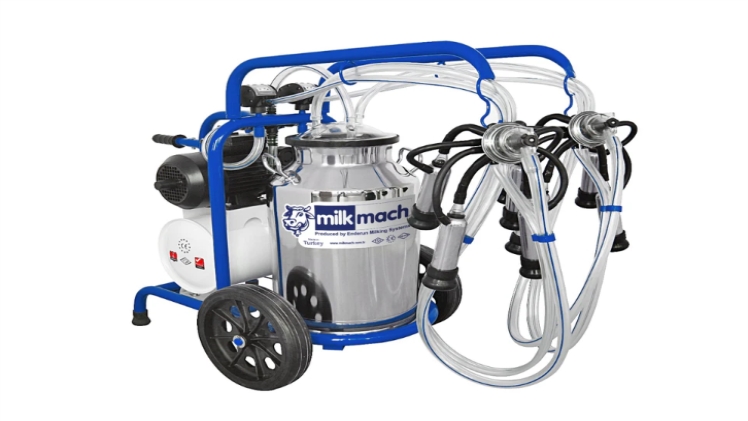As technology continues to advance, most small-scale farmers are slowly shifting from hand milking to using milking machines. Milking machines are farm equipment that aid in milking cows without using hands. They are broadly classified into three types that are milking parlors, barn milking machines, and portable milking machines.
Portable ones are straightforward for their operations and can be moved around conveniently. A barn milking machine is set up in cow’s stalls. On the other hand, Milking parlors are used mainly by large-scale farm owners. However, they are designed differently, and the animals can be milked in single files or batches.
Parts of a Milking Machine
Various types of milking machines contain these typical components regardless of their complexity.
The vacuum system comprises;
Gauge
It creates a vacuum and maintains it at the test of the cow.
Cluster
It comprises four teacups attached to each cow’s teats while milking.
Pulsator
It is a valve that facilities the opening and closing of the liner while milking to maintain a continuous flow of milk to the collecting vessel from the teats.
Receiver vessel
These vessels have capacities that depend on the milking machines’ size. They help collect milk while separating air and milk to aid flow. They are made of stainless steel or glass.
The vacuum system also comprises the regulator and the vacuum pump,
How does the milking machine work?
The milking process happens during the pulsation cycle. This ensures a vacuum’s consistent application to the teats’ end to get out the milk from the udder. These cycles mimic sucking.
During this cycle, the pulsator opens to force milk out and then closes for the teat to rest. The opening and closing of the pulsator ensure the vacuum remains constant to get the milk out without clogging from the udder moving through the system.
While a milking machine ensures an efficient milking process, it saves labor costs and time. However, for super efficiency, a double cow milking machine is a modified machine that allows you to milk two cows simultaneously. These machines are also proven to milk cows sufficiently, which increases yields in the long run.
Advantages of using a milking machine
- Eliminating labor frees farmers from the milking process associated with fixing schedules. The labor is, in turn, devoted to feeding and supervising animals.
- Presence of milking consistency – The machines keeps the milking process consistent for each cow in every visit without the influence of different persons milking the cows.
- Herd management – machines allow the excellent scope of your data collection, which in turn helps improve management from the analysis of the trend of your herds.
- Three times faster than hand milking, it increases milking frequency to three times per day, leading to less stress on the udder and increased comfort for the cow.
- Reduces stress during lactation since it creates good milking routines.
- It leads to the reduction of dependency on farm workers.
- It enables the rearing of a larger herd.
Conclusion
The supply of milking machines is seen to increase to match their needs, for farmers slowly unlearn milking using their physical hands. It shifts dedication to producing innovative ideas and a determination to enhance efficiency. Opting for milking machines is a worthwhile investment since they have stable performance, consume low power, are easy to operate, and are compact. Check price of milking Machine in Kenya.

